8 December, 1999
One part of the science project on Mt Erebus is the seismic work which
deals with the movement of the mountain. Dr. Richard Aster from the New
Mexico Institute of Tech is in charge of this part and spends his time
here setting out and maintaining seismic stations around the volcano.
There are currently 10 permanent seismic stations installed at various
places around the volcano which feed data back to the lab in New Mexico
all year round. The machines run off solar power in the summer when it is
24 hour sun, and batteries all winter when there is no sun. The data is
relayed through radio towers to Mcmurdo station then sent to New Mexico on a
daily basis. The permanent stations record vibrations in the earth with a
sensor called a seismometer, and the vibrations in the air with a
microphone.
On this trip Dr. Aster and fellow scientist Noel Barstow will install 7
more temporary seismometers which are broadband sensors and measure the
slower longer periods vibrations of the volcano that the permanent stations
canít pick up. These sensors can not withstand the sever winter conditions
of Antarctica so will have to be picked up in Jan, when the summer field
season is over. Theses machines are very expensive and are on loan from
PASSCAL (Program for Array Seismic Studies of the Continental Lithosphere).
This is a program within the IRIS ( Incorporated Research Institution of
Seismology) consortium which loans out equipment for projects such as these.
To learn more about these programs or seismology visit their web pages at
<http://www.passcal.nmt.edu>
<http://www.iris.edu >
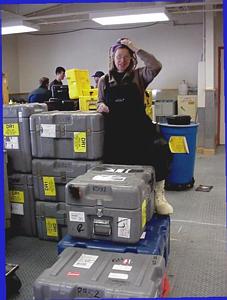
1. The sensors are very sensitive and the journey from the US to Antarctica caused them to be damaged. Noel spent several days at Mcmurdo getting them running and ready for shipment to the mountain. Each sensor is packed in one of the gray boxes.

2. This is Dr Aster at one of his stations on the volcano. To learn more about his work at New Mexico Tech visit his web page at
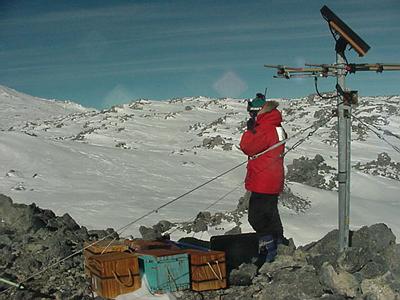
3. Dr. Aster working at one of the stations
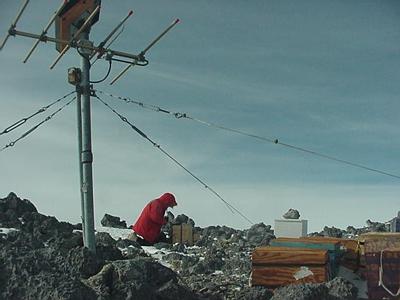
4. At this station there are two sensors, a permanent one and a temporary one. Because of the extreme conditions here, Noel and Dr. Aster must constantly work to maintain them. In these two pictures you can see the radio tower attached to the permanent seismometer which sends back the data to Mcmurdo and then New Mexico. Notice too the wooden boxes, which house the system of batteries which will fuel the sensor over the winter.
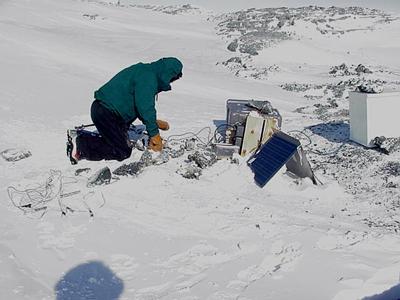
5. This station is near the hut and easy to service. Notice the solar panal near the boxes.
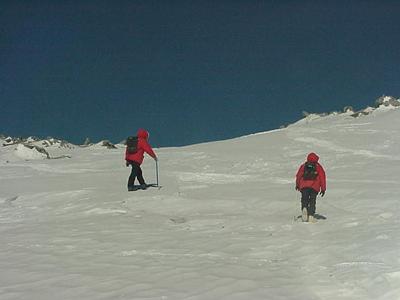
6. The seismic stations are not always close to the hut or can be reached by ski doo. Sometimes we have to walk. Here on the mountain all walks are scenic, so no one minds. Noel, Dr. Aster and I make our way to a remote station.
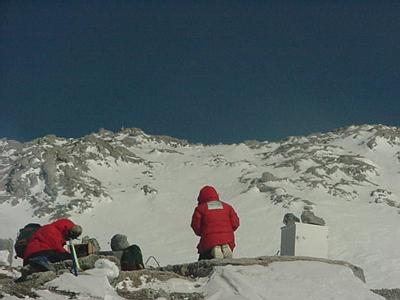
7. We finally make it to the station at the end of our hike. The temporary seismometers record data on a disk which must be replaced every so often, and this is also part of the work in maintaining the machines.

8. This is the data that comes off the seismometer and helps the scientists understand how Mt Erebus works as well as accurately measure the size of the explosions. This record happens to be the explosion I saw when I was on the rim two days ago. This record shows the movement of the ground.
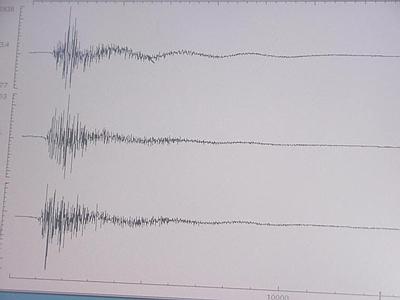
9. A large bubble of gas came up through the lava lake causing lava to blow into the air. There was a huge explosive noise which was recorded on the microphones and seen here. See if you can tell a difference in the patterns of the data.
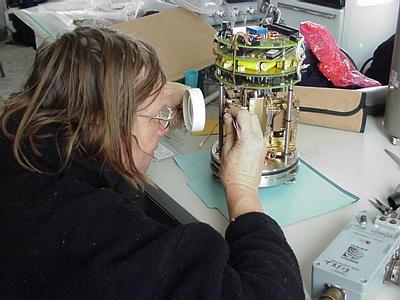
10. Noel at work in the hut replacing damaged parts in the sensors. These machine measure very small movements of the earthís crust and so are damaged by large movements which can occur during shipping and hauling around by helicopter or ski doo.
Contact the TEA in the field at
.
If you cannot connect through your browser, copy the
TEA's e-mail address in the "To:" line of
your favorite e-mail package.
|
